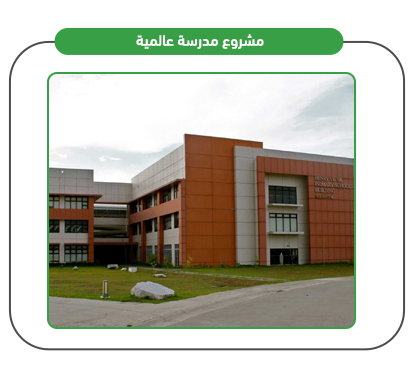The feasibility study for an international school is a critical step to ensure the success of the project. It begins by assessing the demand for international education and analyzing market indicators to identify the needs of the target groups. This helps in developing a methodology that adopts advanced educational curricula to meet the expectations of parents, in addition to establishing an effective marketing strategy that highlights the quality of education and cultural diversity offered by the school. This approach enhances the school’s appeal and its ability to attract students. From a technical perspective, the study focuses on selecting a strategic location that ensures easy accessibility, with a well-integrated infrastructure that supports the educational process. Additionally, the school will be equipped with the latest technologies and modern tools to enhance interactive teaching methods. Regarding the financial aspect, the study includes a comprehensive analysis of construction and operational costs, along with estimating the expected revenues to ensure the project’s sustainability and achieve profitable returns.

The International School project represents an advanced educational environment as it offers internationally accredited academic programs, ensuring high-quality education that aligns with global developments. This school stands out for its ability to develop students’ skills and foster cultural diversity by integrating students from different nationalities into an inclusive learning environment. It also contributes to preparing students academically and professionally through modern educational curricula and techniques. The school offers a comprehensive educational experience that covers all stages of education, from kindergarten to high school. Special attention is given to extracurricular activities, including sports, arts, and cultural programs, to ensure the development of students on both academic and personal levels. To achieve this high standard of education, a feasibility study for the International School is a crucial step to evaluate various aspects of the project, starting from analyzing the needs of the target community, moving through financial and administrative planning, and ensuring the sustainability of the project and the realization of its investment goals.

Accredited international curricula
Multilingual education
Extracurricular activities such as sports, arts, and culture
Advanced teaching technologies
Academic support programs
Advisory and educational services
Modern and advanced facilities
Student exchange programs and trips


Accredited international curricula that meet global standards.
Comprehensive development of students’ skills.
A multicultural learning environment.
Highly qualified and competent faculty.
Using modern educational technologies.
Extracurricular activities that enhance personal capabilities.
Modern and fully equipped facilities.
Preparing students for international universities.
Executive summary
Study project services/products
Market Size Analysis
Risk Assessment
Technical study
Financial study
Organizational and administrative study

The Education Sector in GCC Countries
Because “Mashroo3k” Economic Consulting and Market Research Company believes in the importance of the education sector and its role in localizing national labor, it presents below the key indicators of the educational sector in GCC countries, thereby encouraging investment in this vital sector:
The total number of students in the Early Childhood Development stage (including nurseries and kindergartens) in GCC countries, according to the latest available statistics, reached 851.5 thousand students.
The number of school education students in the GCC was estimated at 9.3 million students (79.4% in the public sector and 20.6% in the private sector).
The number of adult education center learners was estimated at 181,247 students.
The number of higher education students was 2,206,446 students.
The number of early childhood education teachers was 50,647 teachers.
The number of school education teachers was estimated at 727,904 teachers.
There are 5,806 educational institutions operating at the early childhood stage.
There are 32,310 educational institutions operating at the school education stage.
Over the past years, governments in GCC countries have sought to bridge the gap between education and the labor market. They have adopted curricula that increase the share of vocational and technical education and encourage learning through modern media and technologies. It is also worth noting the increase in government spending by these six countries on education and its quality to graduate generations that meet the private sector’s labor needs.
According to the latest statistics:
Saudi Arabia spends 18.9% of its budget on education.
The UAE spends 14.8%.
Oman spends 12.2%.
Bahrain spends 9.8%.
Kuwait spends 12.3%.
Qatar spends 10.5% of its budget on education.
By the year 2023, the value of the private education market in GCC countries is expected to reach $26.2 billion.
The Global Education Sector:
The size of the global educational services market reached approximately $2,882.52 billion by the end of 2021, and global experts expect it to reach $3,191.79 billion by the end of 2022 — achieving a compound annual growth rate (CAGR) of 10.7%.
By 2026, the market value is projected to increase to $4,623.90 billion, achieving a CAGR of 9.7% over the forecast period.

By 2030, the global value of education as an industry is expected to reach $10 trillion USD.
By 2024, the global online education market is projected to reach $247.46 billion USD.
The AI-powered education market is expected to expand at a compound annual growth rate (CAGR) of 36% from 2022 to 2030.
In the year 2000, the number of pupils worldwide was approximately 657 million, and this number increased to 739 million by 2019.
In 2000, the number of secondary education students was around 452 million, rising to 601 million by 2019.